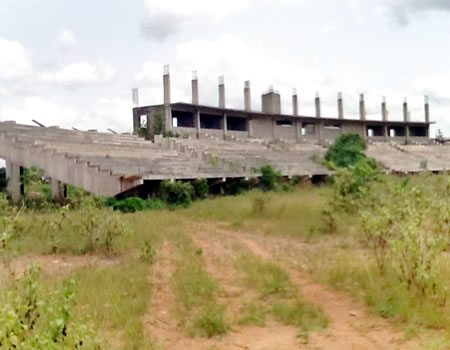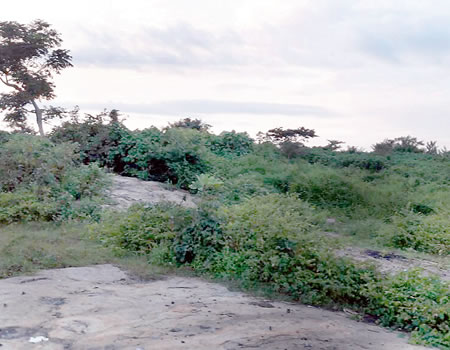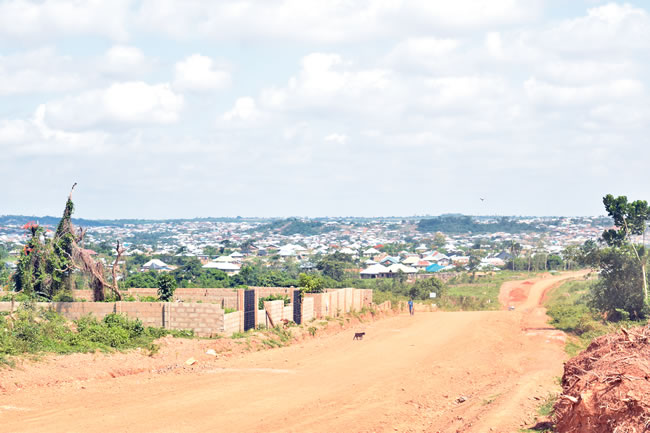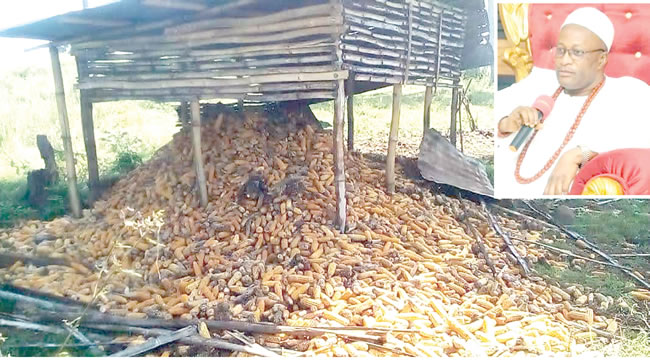
In 2008, the Ondo State government initiated and launched a 10,000-seater capacity ultramodern multipurpose sports complex. However, Hakeem Gbadamosi, who visited the site recently, reports that the now-abandoned site has become a haven for criminals.
Across the globe, sporting activities are regarded as a very important component of the socio- economic fabric of any nation, given the diverse ways it contributes to development. Government across all levels in Nigeria have always played crucial roles in the promotion sports in the country, and till date, Nigeria remains a force to reckon with in the world of sports.
Ondo State, the Sunshine state, is not an exception, as many athletes representing the state have won many medals at local and international levels. This may not be a far-fetched reason the administration of late Dr Olusegun Agagu decided to put in place a state-of-the-art, 10,000-seater capacity stadium in the capital city of Ondo State, Akure.
However, the N5 billion project, which was initiated in 2008 by the Agagu government, never saw the light of the day, as the project was at its 25 per cent construction stage when the Agagu-led administration lost power in 2009, after the Appeal Court sitting in Benin declared Dr Olusegun Mimiko as the winner of the 2007 governorship election in the state.
Speaking on the need for the new stadium at the time, Agagu had stated that the only stadium in the capital city of Ondo State, Akure, failed to meet up with modern standards. According to the report, although the functional stadium at the time was not a bad one, most of the facilities at the Akure Township Stadium were dilapidated. As such, work was initiated on a new stadium but work ceased at the site of the new project located around Maronu area in Akure, immediately after the exit of the Agagu administration.
A visit to the site of the new stadium by Nigerian Tribune, showed that the structures and the whole site had been overrun by weeds, while residents complained that hoodlums had made the place their abode. Apart from this, it was also revealed that herdsmen planned and carried out various atrocities from the new stadium complex, hiding in the thick bushes inside the stadium.
One of the residents of the area, Mrs Abiola Agunbiade, explained that community leaders had raised the alarm over the abandoned stadium as criminals had been using the new stadium complex to perpetrate crimes.
She said several appeals had been made to the state Police command and the state government, to let them know that herdsmen and Indian hemp smokers had taken over the abandoned stadium, leaving the residents at the mercy of the hoodlums, who increased in number with each passing day.
She said: “On many occasions, the hoodlums would attack passers-by and rob them of their valuables and these hoodlums usually escape by running into the new stadium. If you pass through this route after 9pm, you are at risk of being attacked by the hoodlums. That is where they stay now and we have not seen police presence here to make any arrest so far.”
Apart from housing criminals, she said the new stadium site had also been used for religious and social activities, while some parts have been occupied by scavengers who had taken over the little space around the stadium, operating without hindrance.
It was also observed that some shops were erected at the fence of the abandoned stadium site, albeit illegally and indiscriminately. While some children made use of the limited space available inside the stadium to play football, some driving schools also used some part of the compound to teach driving lessons.
According to Mrs Agunbiade, scavengers had taken over the premises and the road, she said, noting that “motorists and scavengers even struggle for space on the road, and I don’t know who allocated the spaces to them. They have made the stadium a permanent site of sorts.”
During the visit to the stadium by Nigerian Tribune, it was further observed that some spaces inside the new stadium had been converted to dumping grounds, while the fences erected around the site had also become weak, and in some instances, collapsed, giving anyone unbridled access to the stadium. Most of the structures put in place by the contractors had been overgrown by weeds, and the site resembled a thick forest.

Another resident, Mr Ishola Tokunbo, expressed displeasure over the state of the new stadium, accusing successive administrations after the Agagu-led government left power, of abandoning the project deliberately. According to him, “the old stadium contributed to the performance of the state-owned club, Sunshine Football Club, in the present Premier league table, seeing as the club had been living on old glory, as they had been banished to Ijebu-Ode for their home matches, scrambling for survival and fighting and swimming in relegation waters.”
While Tokunbo laid the blame at the doorsteps of the Mimiko’s administration, insisting that there was no reason that called for the abandonment of the project, except for political reasons, former Commissioner for Works in the state, Mr Gboye Adegbenro, explained that the decision of the Olusegun Mimiko-led administration to stop work on the construction of the new stadium initiated by Agagu, was never political.
According to him, N5 billion for the 10,000-seater capacity stadium was ridiculous. He explained that if the first stadium in the whole of South-West region, built in 1959 could boast of around 40,000-seater capacity, it would not really be wise to construct anything lesser. He, however, said the former government planned to redesign and expand the new Akure Stadium, with a pledge to construct other stadia in the state before the end of its tenure, but the dream of constructing a new stadium was not possible.
While hoodlums continue to have a field day at the premises, a sports analyst, Femi Adeleye, who commended the decision of the Mimiko-led administration to expand the original plan for the 10,000-seater capacity stadium, however, said the administration never deemed it necessary to continue with the project, as despite condemning the fact that the stadium was earmarked for seating capacity of 10,000 people, nothing was done on the site.
According to him, “The immediate past government never deemed it necessary to continue with the project, even though governance is supposed to be a continuum.”
Speaking on the abandoned stadium project before his death, Agagu, in an interview, had said: “We had a stadium in Akure. It was not a bad stadium, but it was where we held most of our programmes. And when we looked at the purse of the state, we started to build a new stadium which had a completion time of 24 months from June 2008, and we had paid 50 per cent to the contractor, while the balance of 50 per cent was in the bank.
“So, two years from 2008, there would have been an old stadium that was well-maintained and a brand new state-of-the-art stadium. Unfortunately, the old one has been broken into pieces in the name of refurbishment, and the new one has been completely jettisoned. That does not make sense to me, and I don’t think it will make sense to anybody else, except for the author of that decision.”
A coach in the employ of the state government, who spoke on condition of anonymity, said: “It is unfortunate that this project is abandoned. We should not allow this to become another waste. This project could be converted to profitable economic assets that could generate income for the state. Apart from the potential positive social impact on youths, the stadium, if completed, and put into productive use, would provide jobs for a considerable number of the unemployed because sport attracts many economic activities.”
The coach called on the state government to take quick steps to reactivate the project and flush out the hoodlums and herdsmen who had taken over the stadium complex, saying the stadium was now an unofficial grazing reserve for cattle and serves as shelter for their owners.
He said: “We have good materials in this state, which if exposed to modern and right training processes, would produce the best in this state.”
Commissioner for Youths and Sports Development in the state, Honourable Saka Yusuff Ogunleye, frowned at the state of the abandoned stadium by the past administration, saying it was not in the best interest of the people of the state.
The commissioner, who visited the site of the project, expressed disappointment over the stage of work at the site, noting that the state government had expended more than N3 billion on the project, saying Mimiko deliberately abandoned the project. However, Ogunleye assured the people of the state that the present administration would build a befitting Olympic-sized stadium for the state.
He noted that it was unfortunate how things had degenerated, but expressed preparedness to hit the ground running towards restoring life back to the stadium.
“We cannot fold our arms and leave this monument to just waste away. There is no doubt about it that this administration is ready to develop sporting activities. We are taking it to the next level. We will bring back most of our abandoned sporting activities. The principal cups, inter-school matches, we are bringing them all back. We are also going to ensure that our youths are adequately engaged. We will take our youths off the streets. This administration does not want our youths to be used as thugs,” he stated.
As the people of the state, especially the residents of Maronu community, anxiously await government action to wade off criminals from their area, it is expected that the needful would be done and the promise is fulfilled of putting the stadium to good use.







